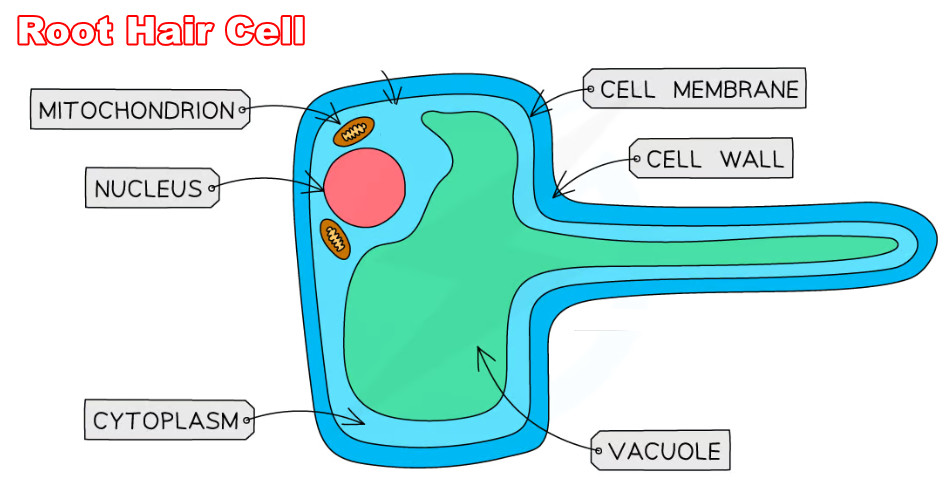Introduction #
Cells are the basic building blocks of all living organisms. They are the smallest units of life and are essential for carrying out all the processes necessary for an organism to survive and thrive. Cells come in two main types: plant cells and animal cells. While both types of cells perform similar fundamental functions, they have distinct structures and features that are suited to their specific roles in the organism.
Parts of a Cell and Their Functions #
Nucleus
The nucleus is often considered the control center of the cell. It contains the cell’s genetic material (DNA) and regulates activities such as growth, metabolism, and reproduction by controlling gene expression.
Mitochondria
Mitochondria are known as the “powerhouses” of the cell. They generate the energy required for various cellular activities through a process called cellular respiration, converting glucose and oxygen into ATP (adenosine triphosphate).
Cytoplasm
The cytoplasm is a gel-like substance that fills the cell and surrounds the organelles. It is where many of the cell’s biochemical processes occur. The cytoplasm helps in maintaining the cell’s shape and consistency.
Chloroplasts (Plant Cells Only)
Chloroplasts are responsible for photosynthesis, the process by which plants convert light energy into chemical energy stored in glucose. They contain the pigment chlorophyll, which captures light energy.
Vacuole
The vacuole is a storage organelle. In plant cells, it stores nutrients, waste products, and helps maintain turgor pressure to keep the plant upright. In animal cells, vacuoles are smaller and primarily involved in storage and digestion.
Differences between Plant Cells and Animal Cells #
| Feature | Plant Cells | Animal Cells |
|---|---|---|
| Shape | Generally rectangular or box-like | Often irregular or round |
| Cell Wall | Yes | No |
| Chloroplasts | Yes | No |
| Vacuole | One Large vacuole | Several small vacuoles |
| Cell Membrane | Yes | Yes |
Specialized Cells #
Specialized cells are designed to perform a specific function more efficiently than a general cell. Here are some examples:
Root Hair Cells
- What They Are: Specialized cells found on the surface of plant roots.
- What They Do: They increase the surface area for water and mineral absorption from the soil.

Nerve Cells (Neurons)
- What They Are: Cells that make up the nervous system.
- What They Do: They transmit electrical signals throughout the body, allowing for communication between the brain, spinal cord, and other organs.

Red Blood Cells
- What They Are: Cells in the blood responsible for transporting oxygen.
- What They Do: They carry oxygen from the lungs to the body’s tissues and return carbon dioxide from the tissues to the lungs. They have a biconcave shape to maximize surface area and facilitate gas exchange.

Xylem Cells
- What They Are: Specialized plant cells involved in the transport of water and nutrients.
- What They Do: They form the xylem tissue, which transports water and dissolved minerals from the roots to the rest of the plant. They have a rigid structure to provide support.
Ciliated Cells
- What They Are: Cells with hair-like structures called cilia on their surface.
- What They Do: They move substances across the surface of tissues. For example, in the respiratory tract, ciliated cells help move mucus and trapped particles out of the lungs.
QUESTIONS #
- What are the basic building blocks of all living organisms?
- How many main types of cells are there, and what are they?
- What is the function of the nucleus in a cell?
- What role do mitochondria play in a cell?
- What is the primary function of the cytoplasm?
- Why are chloroplasts important for plant cells?
- What is the main function of the vacuole in plant cells?
- What structural feature differentiates plant cells from animal cells?
- How does the shape of plant cells differ from animal cells?
- What is the role of the cell wall in plant cells?
- Why might animal cells have smaller vacuoles compared to plant cells?
- What is the function of root hair cells in plants?
- How do nerve cells contribute to the nervous system?
- What is the primary function of red blood cells?
- How do ciliated cells assist in the movement of substances?
ANSWERS
- The basic building blocks of all living organisms are cells.
- There are two main types of cells: plant cells and animal cells.
- The nucleus controls the cell’s activities and contains the genetic material (DNA).
- Mitochondria generate energy for the cell through cellular respiration.
- The cytoplasm is the gel-like substance where many cellular processes occur and helps maintain cell shape.
- Chloroplasts are important for photosynthesis, allowing plants to convert light energy into chemical energy.
- In plant cells, the vacuole stores nutrients, waste products, and helps maintain turgor pressure.
- Plant cells have a rigid cell wall, while animal cells do not.
- Plant cells are generally rectangular or box-like, while animal cells are often irregular or round.
- The cell wall provides structure and support to plant cells.
- Animal cells have smaller vacuoles because they are not as central to their function as they are in plant cells.
- Root hair cells increase the surface area for water and nutrient absorption from the soil.
- Nerve cells transmit electrical signals throughout the body, facilitating communication between the brain, spinal cord, and other organs.
- Red blood cells transport oxygen from the lungs to the body’s tissues and carry carbon dioxide back to the lungs.
- Ciliated cells move substances, such as mucus, across the surface of tissues using their hair-like cilia.




